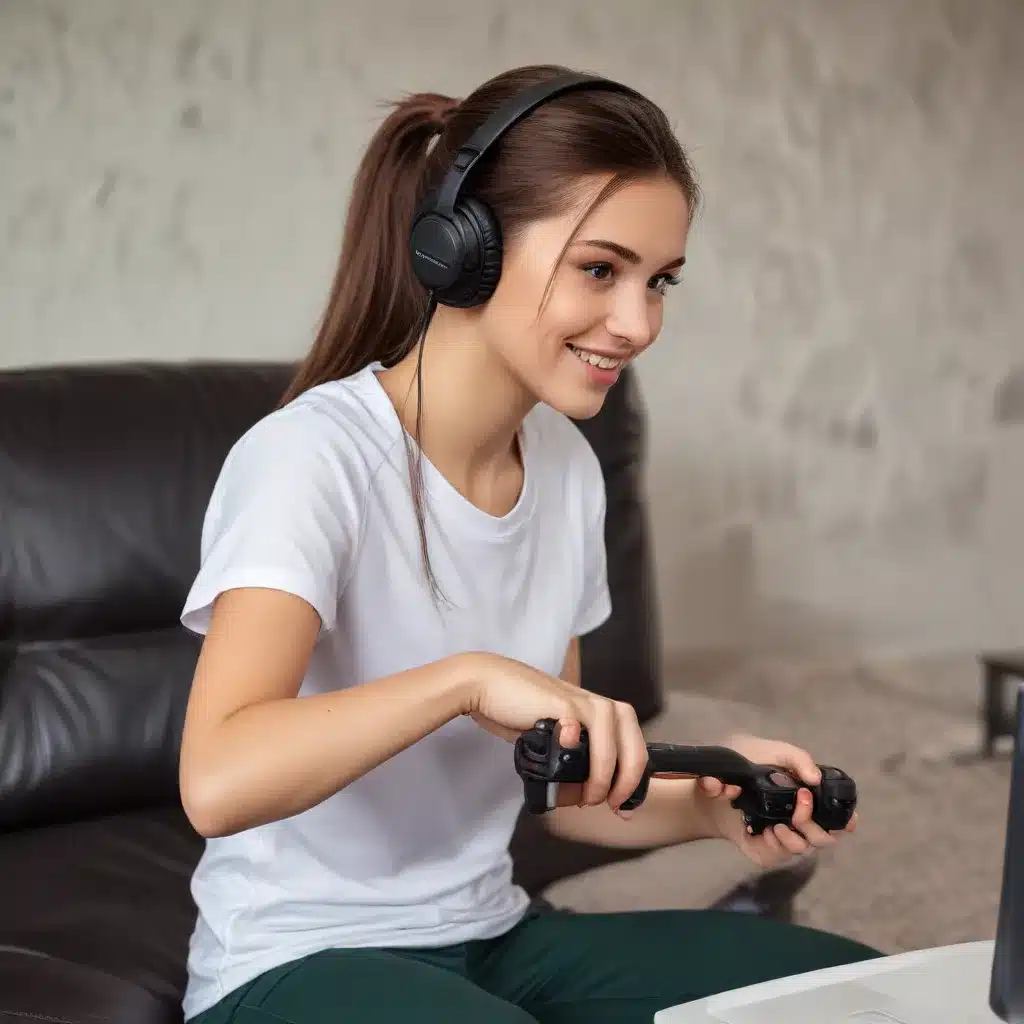
Exploring the Potential of Gaming to Promote Physical Activity and Healthy Lifestyles
The Sedentary Risks of Esports and Gaming
While the rise of esports and gaming has captivated audiences worldwide, it has also raised significant public health concerns. Gamers and esports players are often stereotyped as sedentary “couch potatoes,” spending long hours in front of screens with little physical activity. This sedentary lifestyle associated with gaming and esports can have serious implications for physical and mental health.
Sedentary Behavior and Inactivity in Gamers
Studies have found that esports players can spend upwards of 5 hours per day engaged in gaming, far exceeding recommended physical activity guidelines. This prolonged sitting and lack of movement puts gamers at risk for a host of chronic health issues, including obesity, metabolic disorders, cardiovascular disease, and even premature mortality.
Additionally, research suggests that the prevalence of physical inactivity among esports players may be higher than the general population. A recent international survey found that over 80% of esports players did not meet the World Health Organization’s recommendations for weekly physical activity.
Weight and Body Composition Concerns
The sedentary nature of gaming has also been linked to higher body mass index (BMI) and unfavorable body composition in gamers. While some studies have found normal weight status in esports players, others have reported increased rates of morbid obesity compared to the general population. Furthermore, esports players have been shown to have higher total body fat percentages and lower lean muscle mass.
These findings underscore the need to address the public health implications of the gaming and esports phenomenon. Prolonged sedentary behavior and physical inactivity can have severe consequences for the health and well-being of this growing population.
Harnessing Gaming for Physical Activity and Health Promotion
Rather than solely focusing on the adverse effects, it is crucial to recognize the immense potential that gaming and esports hold for promoting physical activity and healthier lifestyles. By understanding and leveraging the unique attributes of this ever-evolving landscape, we can develop innovative strategies to positively influence the gaming community.
Integrating Exergames and Active Gaming
One promising approach is the integration of exergames and active gaming into the esports and gaming ecosystem. Exergames, which combine physical activity with immersive gaming experiences, offer an attractive and effective way to encourage movement and exercise among gamers.
These games require players to engage in a variety of physical movements and cognitive tasks, simultaneously stimulating the body and mind. By designing exergames that cater to the preferences and skills of gamers, we can create engaging and motivating experiences that seamlessly incorporate physical activity.
Emerging technologies, such as augmented reality (AR), mixed reality (MR), and virtual reality (VR), further expand the possibilities of active gaming. These platforms encourage players to move around, engage with their surroundings, and socialize while practicing their gaming skills. Genres like Beat Saber, Eco Arena, and the ExerCube, for example, leverage these immersive technologies to drive intense physical activity as part of the gaming experience.
Harnessing the Power of Esports Influencers
Another strategic approach is to leverage the influence of esports and gaming celebrities, known as “influencers,” to promote physical activity and healthy lifestyles. These individuals command a vast and dedicated following, making them powerful agents of change within the gaming community.
By partnering with influential esports players, streamers, and content creators, health professionals can tap into the esports ecosystem to disseminate impactful health messages and campaigns. These influencers can serve as role models, inspiring their audiences to adopt healthier behaviors, such as incorporating physical exercise into their routines.
The live-streaming and interactive nature of esports platforms further enhances the potential for direct communication and engagement between influencers and their followers. This unique dynamic can foster a sense of trust and relatability, enabling health-promoting initiatives to resonate more effectively with the gaming community.
Integrating Physical Activity into Esports Training
Recognizing the performance-enhancing benefits of physical activity, esports teams and coaches are beginning to integrate exercise into their training regimens. Research has shown that physical exercise can positively impact cognitive abilities, such as attention, memory, and information processing, which are crucial for success in esports.
Furthermore, exercise can help esports players manage stress, anxiety, and burnout, all of which can negatively impact their in-game performance. By incorporating targeted physical training, esports teams can not only improve the physical and mental well-being of their players but also enhance their competitive edge.
This symbiotic relationship between physical activity and esports performance provides a compelling rationale for the integration of health-promoting initiatives into the esports ecosystem. Esports players and coaches may be more receptive to these interventions when they recognize the direct benefits for their competitive success and career longevity.
Toward a Healthier Esports and Gaming Community
The esports and gaming phenomenon presents a unique opportunity to positively influence the physical activity and health of a rapidly growing population. By understanding the complexities of this ecosystem and leveraging its inherent strengths, we can develop tailored strategies to promote healthier lifestyles and combat the adverse effects of sedentary behavior.
Integrating exergames and active gaming technologies, harnessing the power of esports influencers, and incorporating physical activity into training regimens are just a few of the innovative approaches that can be explored. These efforts can not only improve the overall well-being of gamers and esports players but also inspire a broader shift towards a more physically active and health-conscious gaming community.
As the esports industry continues to evolve and expand, it is crucial that public health professionals, researchers, and industry stakeholders work collaboratively to address the sedentary risks and unlock the vast potential of gaming for promoting physical activity and healthy lifestyles. By embracing this opportunity, we can create a future where gaming and physical well-being coexist harmoniously, empowering a generation of digital natives to lead active, vibrant, and healthy lives.












